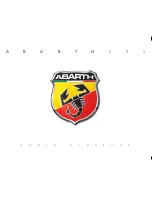
262
2-5. Driving information
CAUTION
■
To avoid accident or injury
●
Do not exceed the TWR, unbraked TWR, GCWR, GVWR or GAWR.
●
If the gross trailer weight is over 2000 lb. (907 kg), a sway control device
with sufficient capacity is required.
●
Adjust the tongue weight within the appropriate range. Place heavier loads
as close to the trailer axle as possible.
●
Do not exceed 65 mph (104 km/h), the posted towing speed limit or the
speed limit for your trailer as set forth in your trailer owner’s manual,
whichever is lowest. Slow down sufficiently before making a turn, in cross
winds, on wet or slippery surface, etc. to help avoid an accident. If you
experience a vehicle-trailer instability from reducing a certain speed, slow
down and make sure you keep your vehicle speed under the speed of
which you experience the instability.
●
Do not make jerky, abrupt or sharp turns.
●
Do not apply the brakes suddenly as you may skid, resulting in jackknifing
and loss of vehicle control. This is especially true on wet or slippery sur-
faces.
●
Do not exceed the trailer hitch assembly weight, gross vehicle weight,
gross axle weight and trailer tongue weight capacities.
●
Do not use cruise control when towing.
●
Slow down and downshift before descending steep or long downhill
grades. Do not make sudden downshifts while descending steep or long
downhill grades.
●
Vehicle-trailer instability is more likely on steep long downhills. Before
descending steep or long downhill grades, slow down and downshift. Do
not make sudden downshifts when descending steep or long downhill
grades. Avoid holding the brake pedal down too long or applying the
brakes too frequently. This could cause the brakes to overheat and result
in reduced braking efficiency.
















































